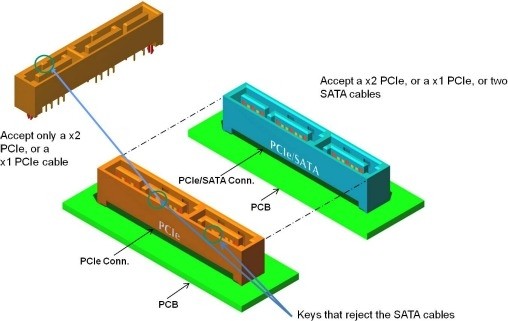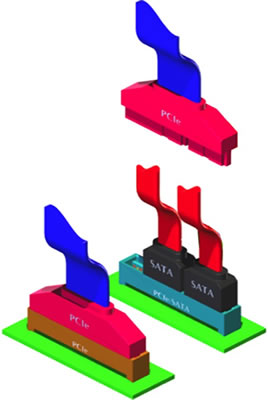The Serial ATA International Organization (SATA-IO) has announced the development (PDF) of a new standard that combines SATA software infrastructure with the PCI Express interface. Colloquially dubbed "SATA Express," the new technology will allow manufacturers to create devices that can tap into the bandwidth of PCIe slots while remaining compatible with existing SATA applications.
The amalgamation will offer an affordable way to provide devices with interface speeds of 8Gb/s and 16Gb/s (one lane via PCIe 2.0 or two via PCIe 3.0) – a healthy increase over SATA 3.0's single-channel throughput of 6Gb/s. Although that's plenty of bandwidth for most drives, SATA-IO is concerned about certain high-end consumer and enterprise configurations that could saturate the existing 6Gb/s interface.
"We had two choices. Either increase the SATA speed or find another solution that can be available today and be cost and technology compatible with legacy SATA environments," said SATA-IO president Mladen Luksic, speaking with Computerworld. Because such high-end configurations represent a small portion of the market, the organization thought SATA Express would be the least burdensome approach.
SATA Express devices are recognized by the host as plain old SATA hardware, and because virtually all modern desktops support PCIe and SATA, users won't have to purchase upgrades to take advantage of the new spec. It's also more scalable than traditional SATA because SATA-IO can simply tap into more PCIe lanes to boost speed and satisfy higher performance requirements when the time comes.

"The SATA Express specification provides SSD and hybrid drive manufacturers the advantages of performance and scalability enabled by PCIe 3.0 – which is available now – and the ubiquity of SATA" said Luksic. SATA-IO also announced "SATA µSSD," a single-chip solution for ultra-thin form factors (i.e. tablets). SATA Express will be finalized by the end of 2011, but there's no such date for SATA µSSD.
In a separate announcement, the USB 3.0 Promoter Group revealed its developing a new power delivery specification that will support the flow of more electricity. The updated spec permits up to 100W of power to be drawn, and would allow even more external devices to scrap their clunky external power supplies. The group will demonstrate the changes during the Intel Developer Forum which runs September 13-15.
